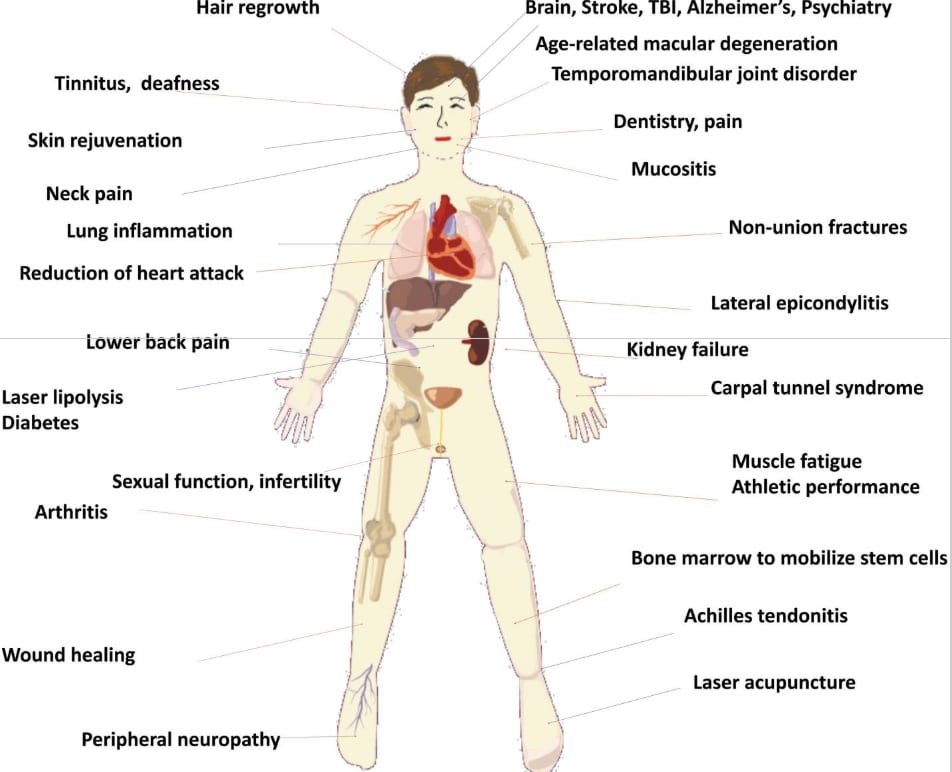Intravenous laser blood irradiation (633nm) Boosts Immune System
Source Wikipedia

Intravenous blood irradiation.
Intravenous or intravascular laser blood irradiation (ILBI) involves the in-vivo illumination of the blood by feeding low level laser light generated by a 1–3 mW helium–neon laser at a wavelength of 632.8 nm into a vascular channel, usually a vein in the forearm, under the assumption that any therapeutic effect will be circulated through the circulatory system.[11] Most often wavelengths of 365, 405, 525 and 635 nm and power of 2.3 mW are used. The technique is widely used at present in Russia, less in Asia, and not extensively in other parts of the world. It is shown that ILBI improves blood flow and its transport activities, therefore, tissue trophism, has a positive effect on the immune system and cell metabolism.[1][2] This issue is subject to skepticism.[1] There have been some calls to increase research on this topic.[5]
_____________________________________________________________________________________________
Finsen received the Nobel Prize for Physiology or Medicine in 1903 for his work in treating cutaneous tuberculosis with UV light and smallpox with red light.2
https://www.ncbi.nlm.nih.gov/pmc/articles/PMC3449167/
Red light therapy is also known as photobiomodulation (PBM), low-level light therapy (LLLT), biostimulation, or photonic stimulation. … In 1903 physician Niels Ryberg Finsen won the Nobel Prize in Medicine for his successful treatment of smallpox and lupus.
“ It is well established in that PDT in anti-cancer therapy induces host immune responses that have components of innate and adaptive immune systems. In principle the same process should operate when infections are treated with PDT. The effect of PDT on the host immune system is an important implication of PDT. In recent years several clinical trials of PDT have been conducted against viral infections, especially human papilloma virus (HPV). Systemic and topical PDT in several anatomic sites has been used to treat papillomatosis caused by HPV. It’s a potentially life threatening recurrent respiratory tract disease affecting both children and adults. Systemic treatment of 48 patients with 50 J of 630 nm laser light 48 hours after dihematoporphyrin ether (4.25 mg/kg) significantly decreased papilloma growth rate compared to control patients.
https://www.ncbi.nlm.nih.gov/pmc/articles/PMC6859693/#!po=18.9655
” Many of the diseases treated by PBM are localized by nature and include orthopedic conditions, such as inflammation in joints and tendons, wounds, and fractures. In these applications, light is usually delivered as a spot (often from a focused laser beam) onto the affected area of tissue. The wavelengths employed are mostly in the red regions (630–680 nm) or in the NIR region (780–940 nm), although longer wavelengths (980 and 1064 nm) have also shown benefit.32 Power densities are usually in the region of 10–100 mW/cm2, together with energy densities in the region of 4–50 J/cm2. It is usual to use higher power densities and higher energy densities to treat lesions that are located deeper in the tissue, such as large joints, spine, and brain. Figure 1 gives a diagrammatic illustration of many disorders that have been treated by PBM. “

